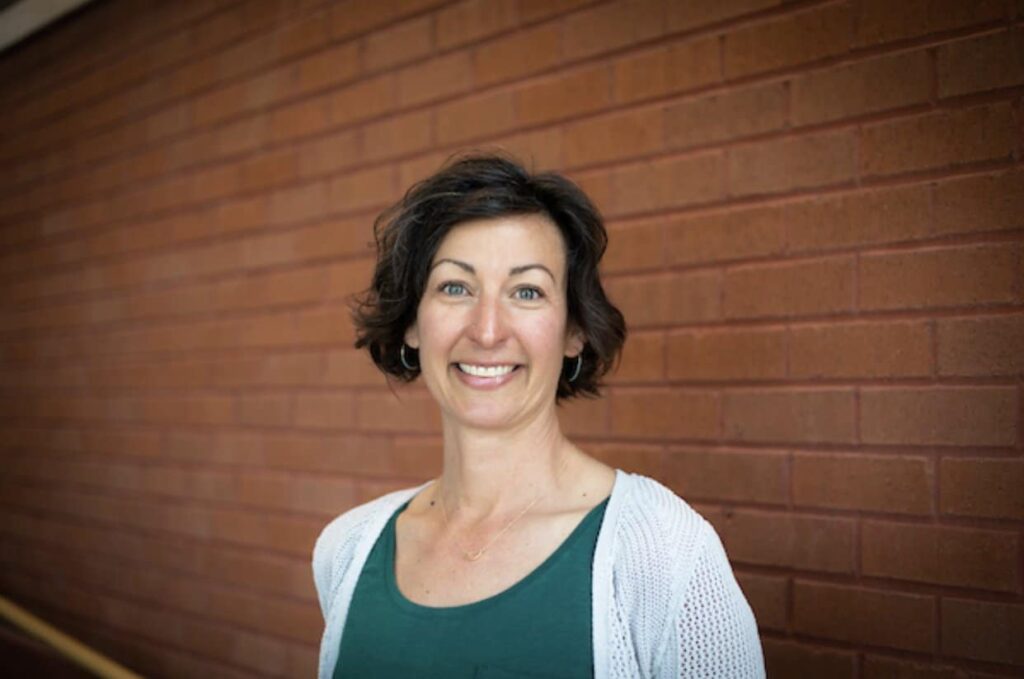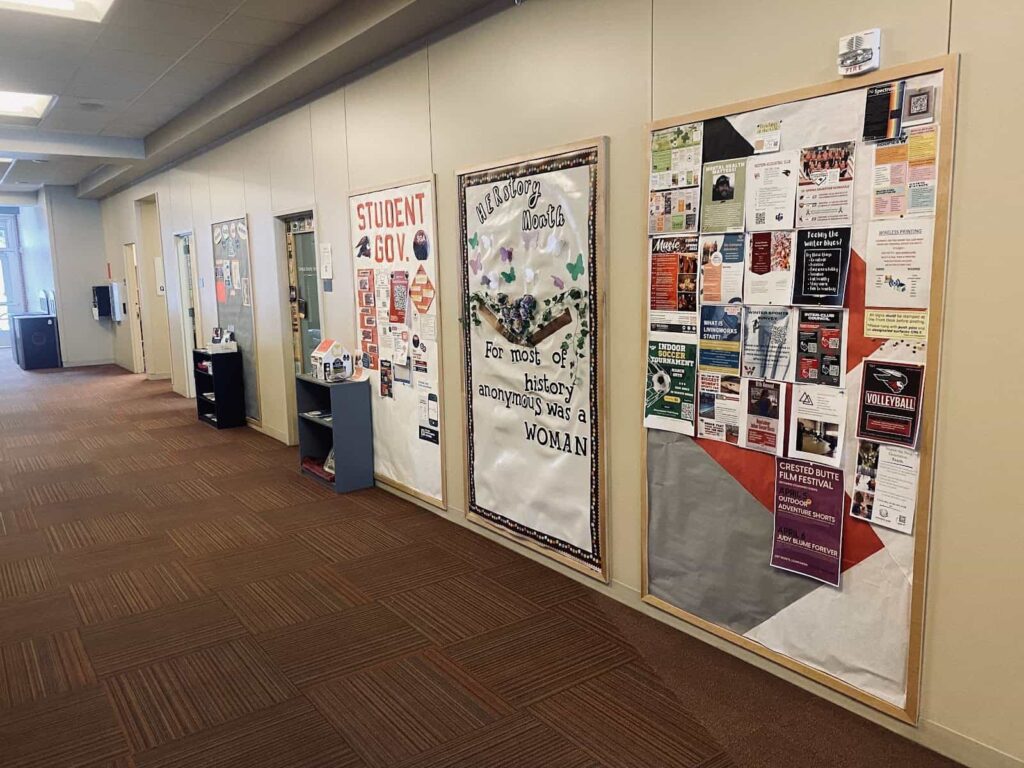By Em Tanner
Let’s face it, Gunnison winters are typically long and difficult; and the finals season that almost immediately follows are just the cherry on top.
Top o’ the World staff writer Emily Tanner sat down with Nicole Swaggerty and Christine Spiers of the Student Health and Wellness Department to discuss wellness tips ahead of finals, Western’s strengths and shortcomings in offering student support, and upcoming goals and programs for student wellbeing.

While a much-earned break in the winter weather is likely just around the corner, Nicole Swaggerty, Western’s director of student health and wellness, is quick to note the toll that Gunnison’s blustery weather can have — beginning in the fall and continuing through the bulk of the spring semester.
That said, she quickly notes there are options available for students to combat the winter blues.
“Even if you are active, the winters here can be hard — they are hard; they’re long, the days are short, they’re cold… start the day in the way that you’d want to. Even if it’s cold out, you can bundle up and get out for a brisk walk. In fact, you might make yourself walk faster if it’s colder,” Swaggerty added with a laugh.
“Just get to the gym, find a class to go to, or [simply] get out of your house. Sometimes, just getting up and starting on the right foot helps break that barrier of the long days where you don’t get a lot of dopamine,” she said.
But one of the most important wellness tips, Nicole notes, is to be kind to yourself, and receptive to your own needs:
“Take a ten minute break. You don’t realize, even though you might have the busiest schedule in the world, how much those ten minutes will not only increase your energy, but will give your brain the refresh it needs to perform like you want it to.”
During that break, Swaggerty recommends breathing exercises, meditating, getting some movement, or practicing mindfulness — but aim to avoid alcohol or other mind-altering drugs.
“This is not the time to abuse substances that will elevate stress or other effects … What are those coping strategies that might not be the best coping strategies even though you think it’s going to help or make you better? [They] may actually make [matters] worse in the end,” she notes.
Additionally, Swaggerty suggests a number of holistic avenues students can take to feel better, and perform better, as the semester races to a close.
“Shifting to better strategies, which would be eating well, getting some rest, getting some movement in, hydrating, getting your sleep, and taking steps. Understand that [being] overwhelmed [can] unfortunately produce an inability to focus or motivation to do that work,” she said.
In many cases, charting a path to enhanced wellness starts with recognizing stress in your life, and crafting an individualized plan to counter it.
“Sometimes it’s a matter of understanding that, when you’re in that high-stress, you [have] extra forces working against you … it’s normal, it does make it harder, but every little step you can take to break it will matter,” concludes Swaggerty.
Highlighting Western’s wellness strengths
On the positive front, Nicole was quick to mention the many programs that Western offers, including: the Sources of Strength Program, the LEAD office, EPIC mentors, Multicultural Center, Peer Educators, and even the library.
“When I was a student, I thought that I had to do everything by myself and I didn’t realize that I could go get advice … that’s the beautiful part about Western; it’s all here and it’s all easy-access for students,” said Swaggerty.
Regarding mental health services, she notes that Western offers an on-campus Counseling Center, open Monday through Friday.
“We have had great success with the change in contract with GVH. There’s been no scheduling issues, and they have daily walk-in hours two times per day,” she said.
Those walk-in hours are 10 to 11 a.m. and 2 to 3 p.m. and function on a first-come, first-serve basis.
“If virtual is a bit easier, we [also] have a great TimelyCare contract that supports student’s health and wellbeing through a virtual platform; and it’s really high-caliber. I love that it offers peer community support, offers some self-care strategies and journeys for students to explore … [there’s] scheduled counseling, and then on-demand, which is 365, 24/7,” relays Swaggerty.
On campus, the Student Health and Wellness Office has played a key role in jumpstarting new programs this semester, including the new Mountaineer Food Hub, an on-campus food-pantry that’s open for students twice a week.
Swaggerty and Christine Spiers, the program coordinator for the Student Health and Wellness office, have also continued and expanded older initiatives, like the annual spring wellness event, now in its third year.
“We called it ‘WellFest’ this year,” explained Swaggerty. The event highlighted various aspects of wellness and linked students to healthy strategies — and resources available in the greater Gunnison community.
“[During] the month of March, we’ve been tabling and providing resources of information on the topic of drug and alcohol abuse,” adds Spiers, who was an EPIC mentor last year before graduating and shifting into her current role.
Those informational efforts included handing out informational packets, koozies, and drug-testing kits before students went off on spring break.

Underutilization of resources: An ongoing issue
Swaggerty sees convincing students to make use of the university’s existing resources as one of the biggest hurdles to improving student health at Western.
Take TimelyCare, for example, which is only actively used by about 16 percent of current Western students.
Beyond growing the usage of TimelyCare, another area for growth is to more fully utilize the Peer Health Educators on campus.”
“I’d love for the Peer Health Educator Group to get tapped into more regularly,” said Swaggerty. “Whether it’s from a student perspective, or from a faculty perspective. We can offer different information and resources, presentations and training.”
Nicole foresees that the Peer Health Educators can provide classes on drugs and alcohol, healthy cooking, and various mental health topics going forward.
“Peer Health is a great resource that I think is a bit underutilized [overall], but we’re rebuilding that as we go,” she added.

The holistic path to improved wellbeing
Over a longer time frame, a major wellness implementation for Swaggerty and Spiers would be implementing curriculum-based programming.
“[This would] address our key focuses in health and wellness, which [are]: substance use and abuse, mental health, and healthy relationships. The larger aspect of that is a curriculum where the Peer Health Educators are able to provide curriculum-based presentations through a variety of classes and departments,” noted Swaggerty.
“We have talked about having support groups on campus in different health and wellness topics so that students can come together and have a space to talk and build a relationship with their peers who are also struggling.”
In addition to these efforts, the Student Health and Wellness office is also looking to continue efforts striving for improved equity and food education on campus.
“[We’re asking] how can we fulfill that need for students and do it at a time that works really well for them, in a place that works really well for them?” said Swaggerty.
Staying up to date
If students want to stay up-to-date on upcoming events and monthly themes, they can keep their eyes on the UC bulletin board, pictured above.
Students can also find information via studentwellness@western.edu, through Canvas, and on Instagram @westernepicmentors and @wcu_lead_orientation.

